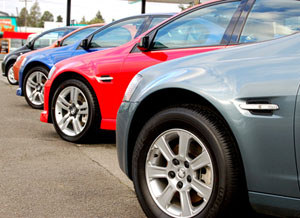Lightweight materials making cars more economical
 Hamburg - For decades cars have become bigger and heavier with more luxurious and safety gadgets, but several car makers are bucking the trend with new lightweight materials and design principles that save both fuel and resources.
Hamburg - For decades cars have become bigger and heavier with more luxurious and safety gadgets, but several car makers are bucking the trend with new lightweight materials and design principles that save both fuel and resources.
Heavier cars mean more fuel consumption and more wear-and-tear of components such as suspension and tyres.
Audi pioneered weight-saving technology 10 years ago with aluminium bodies which are two-thirds lighter than conventional steel. It is alloyed with magnesium and silicon for additional strength.
The Audi engineers calculated that by reducing a car's weight by 100 kilogrammes fuel consumption was improved by about 0.3 litres per 100 kilometres, emitting between 7.5 and 12.5 grams less carbon dioxide into the atmosphere per kilometre.
Computer programmes and mathematical methods are used to calculate the most efficient utilisation of materials based on bionic principles copied from nature. Like the bones of a human skeleton, optimal function is combined with low weight.
The weight of the new Audi TT Coupe and Roadster have been reduced by 100 kilogrammes compared to the predecessor models using both aluminium and steel elements. The rear floor pan, the doors and trunk lid contain fully-galvanized steel elements, improving the weight distribution between front and rear. The TT weighs only 1.260 kilogrammes with the body itself made up of 68 per cent aluminium and 66 per cent steel.
Various methods are used to bond aluminium and steel components such as punch riveting, clinching, adhesive bonding and laser welding.
With its Efficient Dynamics programme, BMW has significantly reduced the weight of its current range of cars compared to predecessor models. Fuel consumption of the fleet has been reduced by 25 per cent compared to the 1995 figures, according to the car maker.
Start-stop technology and brake regeneration is part of the concept. But the materials used today in chassis, gearbox and wheel rims make the car a good deal lighter. Engines are smaller and more compact while offering better performance and fuel efficiency.
Mazda has since 2007 continuously reduced the weight of its car platforms. It has also extended the use of renewable eco-materials that requires 30 per cent less energy as part of its Zoom-Zoom sustainability programme.
Mercedes is following a trend by downsizing engines across its model range. Over the years, the car maker had been forced to equip its cars with bigger engines to carry additional weight.
Engineers are now working on the new Diesotto concept which combines the strengths of the low-emission four-cylinder petrol engine with the fuel economy of a diesel. A 1.8 litre engine has an output of 238 hp which makes it suitable for an S-Class currently running on a six cylinder. (dpa)